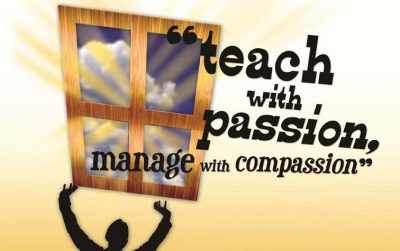We believe in thanking our sources! This post was sourced from the following blog/website: http://feedproxy.google.com/~r/dangerouslyirrelevant/~3/ZkOtUDuwjwQ/book-review-learning-transformed-8-keys-to-designing-tomorrows-schools-today.html
The following is a new blog post related to education and teaching and relevant to our website visitors. The blog post is not based on the opinions or values of our company but is related to education and teaching, so we wanted to share it with YOU! If you ever have any questions please let us know. Now… on to the post!
This post is a review of Learning Transformed: 8 Keys to Designing Tomorrow’s Schools, Today by Eric Sheninger and Tom Murray. Disclaimer: both are friends of mine so keep that in mind as you read below. My short recommendation? There is lots of value in this book and a great deal of information that validates what we know about good leadership and strong school organizations.
What I liked about the book
Eric and Tom list eight ‘keys’ to intentionally designing tomorrow’s schools. They are:
- Leadership and school culture lay the foundation
- The learning experience must be redesigned and made personal
- Decisions must be grounded in evidence and driven by a Return on Instruction (ROI)
- Learning spaces must become learner-centered
- Professional learning must be relevant, engaging, ongoing, and made personal
- Technology must be leveraged and used as an accelerant for student learning
- Community collaboration and engagement must be woven into the fabric of a school’s culture
- Schools that transform learning are built to last as financial, political, and pedagogical sustainability ensure long-term success
It’s hard to argue with any of these. All are critically-important components of robust, future-ready schools and each gets substantial coverage in their respective book chapters. Tom and Eric back these up with a variety of research studies to support the importance of each one. And they write in an engaging way that keeps readers rolling along. All of this is good.
There are strong emphases throughout the book on building trust, fostering relationships, empowering others, the intentionality of the work, the importance of communication, and recognizing our power as change agents. This is all good too!
I thought Chapters 4 (learning spaces) and 5 (professional learning) were especially strong. Chapter 4 gave me a lot to think about and there are numerous ideas in Chapter 5 for taking educators’ learning in some new directions, particularly pages 152-155 where Eric and Tom describe some ways to move from hours- to outcomes-based ‘accountability’ for educator learning.
Finally, Tom and Eric have chosen to profile some great leaders and organizations throughout the book and also have selected some resonant quotes. My favorite is probably the quote from Joe Sanfelippo and Tony Sinanis: ‘In the absence of knowledge, people make up their own.’
Some minor quibbles
There are some things that I wish were framed a little differently in the book. For instance, in Chapter 1, Eric and Tom say that ‘great leaders help others see the value of change by clearly articulating a compelling why and working to build support throughout consensus’ (p. 34). I wish they spent more time here talking about a visioning process that was less leader-centric and focused more on educators, students, and parents figuring out together what their why is instead of simply being sold their why by the leader. If we want shared understandings and commitments within organizations, I believe that process needs to be more communal rather than leader-driven. I’ve seen too many schools where the leader has a robust vision but never can ‘build support’ with the staff because she’s the only one that really owns it and is trying to then sell it to everyone else. Tom and Eric do talk a bit more about shared visioning on page 36 when they quote Kouzes & Posner, but that section doesn’t articulate what a ground-up process could look like.
In Chapter 2, Eric and Tom do a nice job of articulating ways that technology can enhance student learning. But the chapter sometimes feels a little technology-centric. There are numerous ways to give students access to deeper learning, greater student agency, and more authentic work opportunities that don’t involve learning technologies. Even though I’m an educational technology advocate, I would have liked some more discussion of project- and inquiry-based learning, performance assessments, community-based service learning, Harkness circles, and the wide variety of other non-technological possibilities that still result in robust learning. There is mention of a few of these things but I think in general these could have been fleshed out more. I did greatly appreciate the emphasis on equity in this chapter. Chapter 3 is similar. Tom and Eric discuss the concept of return on instruction but the chapter is framed dominantly within a lens of technology infusion. We need classrooms to move beyond factual recall and procedural regurgitation, and I know that Eric and Tom agree with that notion. But I think that non-technological learning and pedagogy could get some more attention in this chapter too. Although Tom and Eric state directly in Chapter 5 that ‘professional learning must focus on student outcomes through improved pedagogy – not on tools’ (p. 146), I think that idea gets lost in Chapter 3 amidst all of the technology discussions.
The book closes on the idea of sustainable change. That’s an incredibly important topic and also is incredibly difficult to accomplish. There is a great deal of discussion in the chapter about what needs to be done, and I think Eric and Tom rightly identify numerous issues and tasks. They also do a nice job in this chapter of staying positive and encouraging people to recognize that great leadership is within their grasp. However, there is barely a mention in this chapter of one of the biggest barriers to organizational sustainability of change initiatives, which is leadership turnover. When superintendents, principals, and/or school boards turn over fairly frequently, teachers and communities get whipsawed by new innovations and new directions because those new leaders rarely continue the innovation pathways of their predecessors. Some discussion in this chapter of how to actually navigate that concern would have been helpful beyond the couple of sentences on political sustainability that merely acknowledge the issue.
Finally, there are large chunks of several chapters that feel like long lists of leadership ideas that have been thrown together (see, e.g., Chapters 1 and 7). It’s not that the ideas or items are wrong or incorrect, it’s just hard to see how they all fit together. Tom and Eric do a great job of citing research in their book, but it would be helpful to have some research-based frameworks and mental models that tie the list items together. For instance, if there’s a three-page list of ten leadership ideas, why these specific ten and not others and how do they interact together to create a coherent whole? If there are two solid pages of bullet points, maybe those could be tied together into some kind of model that illustrates the connectivity of the disparate parts. Otherwise, we’re left to question where all of these ideas came from and how they’re supposed to work together.
All of these are minor quibbles and choices have to be made in any book about what to focus on and what to leave out. It’s Eric and Tom’s book, not mine, and they’ve done a nice job of presenting their arguments, their reasoning, a variety of resources, and numerous action steps that can be taken.
Questions I have after reading this book
- How do we flesh out in more concrete detail – and with specific action steps – some of the ideas articulated in this book?
- How do we navigate the twin challenges of leadership turnover and initiative fatigue due to successive leaders wanting to ‘put their stamp on’ the organization?
- Much of the book is based on the research about good leadership. We’ve known for a long time much of what’s in the book, but those research-based leadership practices aren’t showing up in administrators’ actual practices. How can we as educational leadership researchers do a better job of translating our scholarship into actionable ideas and behaviors in the field?
- How can schools do a better job of treating parents as authentic partners and co-designers in the learning of their children, not just passive recipients of whatever narrow boxes we educators try to put them into?
- How can we foster the creation of ground-up visions for student learning and educational experiences rather than individual or oligarchic visions that then get sold to the rest of the community? And how can we involve students as substantive partners in that work?
Rating
I liked this book a lot, and I’m glad I have friends who make me smarter. I marked it up all over the place. I give it 5 highlighters (out of 5).


Teachers and Educators are our heroes. We want to thank you for the work you do!
Yours In Education!
Time To Teach


This Post Has 0 Comments